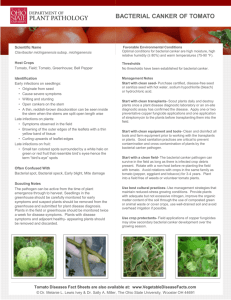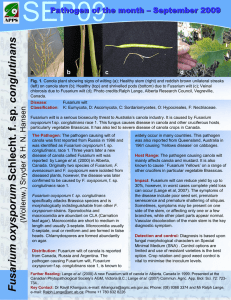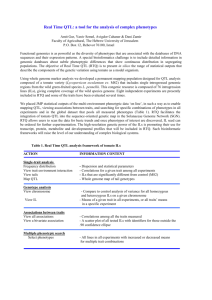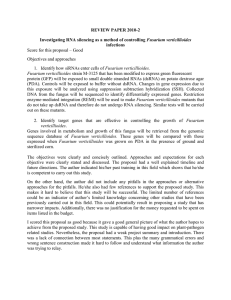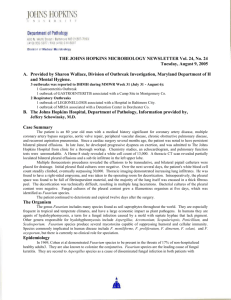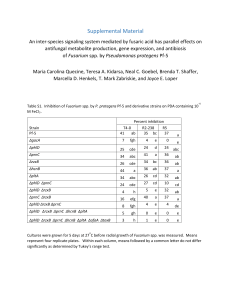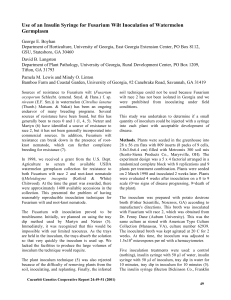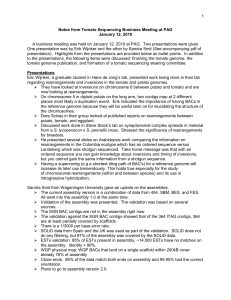Document 6900227
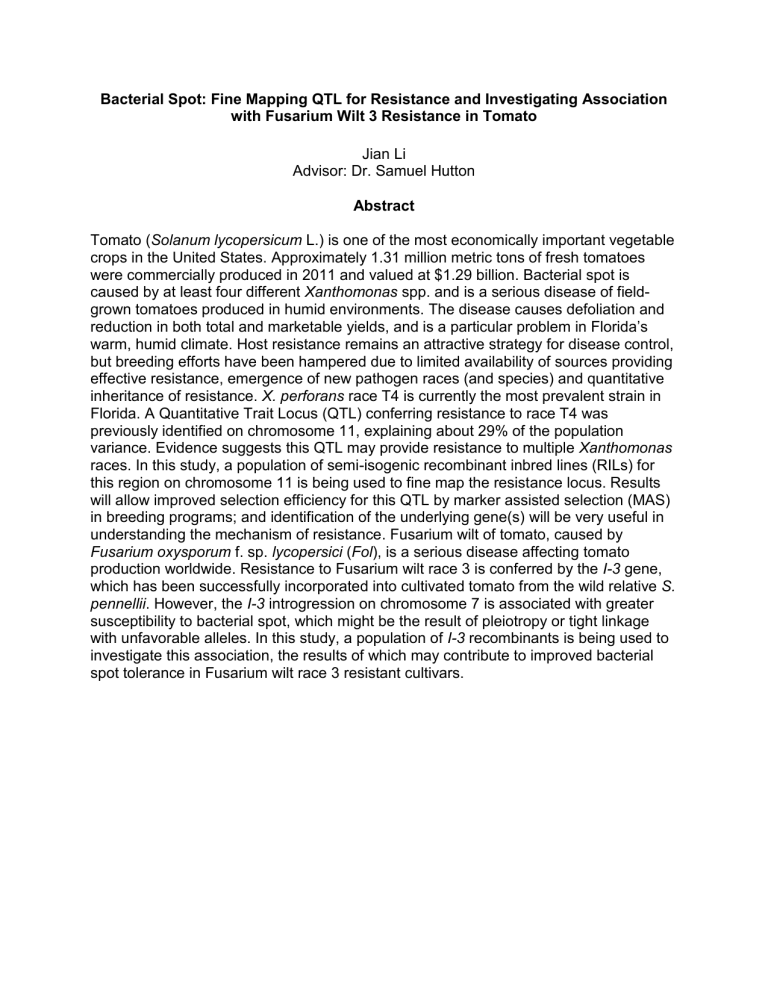
Bacterial Spot: Fine Mapping QTL for Resistance and Investigating Association with Fusarium Wilt 3 Resistance in Tomato
Jian Li
Advisor: Dr. Samuel Hutton
Abstract
Tomato ( Solanum lycopersicum L.) is one of the most economically important vegetable crops in the United States. Approximately 1.31 million metric tons of fresh tomatoes were commercially produced in 2011 and valued at $1.29 billion. Bacterial spot is caused by at least four different Xanthomonas spp. and is a serious disease of fieldgrown tomatoes produced in humid environments. The disease causes defoliation and reduction in both total and marketable yield s, and is a particular problem in Florida’s warm, humid climate. Host resistance remains an attractive strategy for disease control, but breeding efforts have been hampered due to limited availability of sources providing effective resistance, emergence of new pathogen races (and species) and quantitative inheritance of resistance. X. perforans race T4 is currently the most prevalent strain in
Florida. A Quantitative Trait Locus (QTL) conferring resistance to race T4 was previously identified on chromosome 11, explaining about 29% of the population variance. Evidence suggests this QTL may provide resistance to multiple Xanthomonas races. In this study, a population of semi-isogenic recombinant inbred lines (RILs) for this region on chromosome 11 is being used to fine map the resistance locus. Results will allow improved selection efficiency for this QTL by marker assisted selection (MAS) in breeding programs; and identification of the underlying gene(s) will be very useful in understanding the mechanism of resistance. Fusarium wilt of tomato, caused by
Fusarium oxysporum f. sp. lycopersici ( Fol ), is a serious disease affecting tomato production worldwide. Resistance to Fusarium wilt race 3 is conferred by the I-3 gene, which has been successfully incorporated into cultivated tomato from the wild relative S. pennellii . However, the I-3 introgression on chromosome 7 is associated with greater susceptibility to bacterial spot, which might be the result of pleiotropy or tight linkage with unfavorable alleles. In this study, a population of I-3 recombinants is being used to investigate this association, the results of which may contribute to improved bacterial spot tolerance in Fusarium wilt race 3 resistant cultivars.
